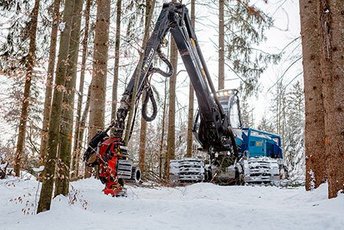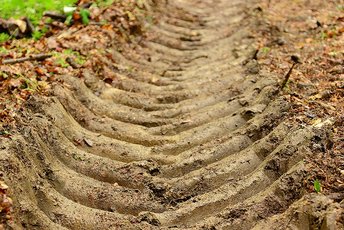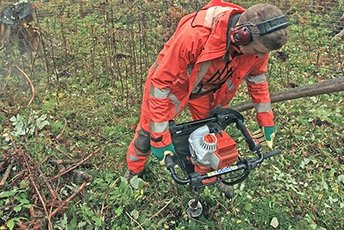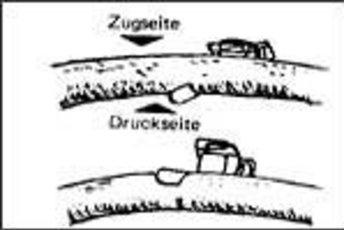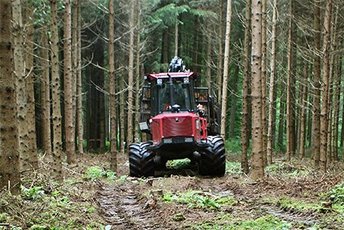Forest technology
skip List19 articles are displayed
Use of harvester data in Bavaria
TUM project shows that continuous data exchange in the timber supply chain offers great potential - for everyone involved.
Using LiDAR to look for skid trails in the forest
To protect the forest floor and facilitate planning, the skid trail and extraction track network for timber harvesting in the canton of Aargau (Switzerland) is being digitised. The use of image recognition software and artificial intelligence has simplified and accelerated this process considerably.
Adapting timber harvesting methods to nature conservation requirements
The requirements of nature conservation in forests lead to greater structural richness. These forest structures make forest operations more difficult. This research project investigated how timber harvesting methods can be adapted to meet these challenges.
Estimation of the costs of tending young forest stands
The WSL research institute has developed the software JuWaPfl, which can estimate both the productivity and costs of important forestry measures undertaken at what is known as the first stage of production. An updated version is available since August 2024.
Do harvesters reduce the risk of bark beetles?
More and more of the processing of bark beetle-infested timber is being done by harvester: Does the force exerted by the harvester head reduce the suitability of the bark as a breeding site and destroy existing beetle broods? Ultimately it was unclear whether the logs required further processing after harvesting. Several studies on this have been carried out in the Black Forest.
Over and above slopes and wetlands: extracting timber with a small cableway
Time to get the timber out of the forest! But how do we do it on slopes that are too steep, or where the ground is too wet? Is a small cableway possibly the solution?
Work Safety when Processing Storm Damaged Timber
Dangerous situations - at the beginning of logging due to safe practices being underestimated or overlooked and later on as work becomes routine and is treated light-heartedly.
Harvesting Methods for Windthrown Timber
Which harvesting method is most suitable when coping with storm damages? Depending on conditions and availability of machines different combinations are possible.
Salvage Logging of Storm Damaged Timber
Safety training, organising the supporting machines, instruction of contractors, maintaining quality standards? Many things have to be taken into consideration for a safe and clean salvage logging.
Side slope stabilisation on unstable ground
The construction of forest tracks can be a real challenge if the underlying soil is very soft. If this is the case, geogrids can be used to stabilise the side slopes.
Productivity models for wood harvesting operations
The wood harvesting productivity model HeProMo enables an easy and rapid assessment of time duration, productivity and cost for various wood harvesting operations. An updated version is available since August 2024.
What are the benefits of half-loading vehicles during timber extraction?
The Swiss Federal Institute for Forest, Snow and Landscape Research WSL tested whether it would be less damaging to the soil in logging trails if vehicles were only loaded to half-capacity during timber extraction.

